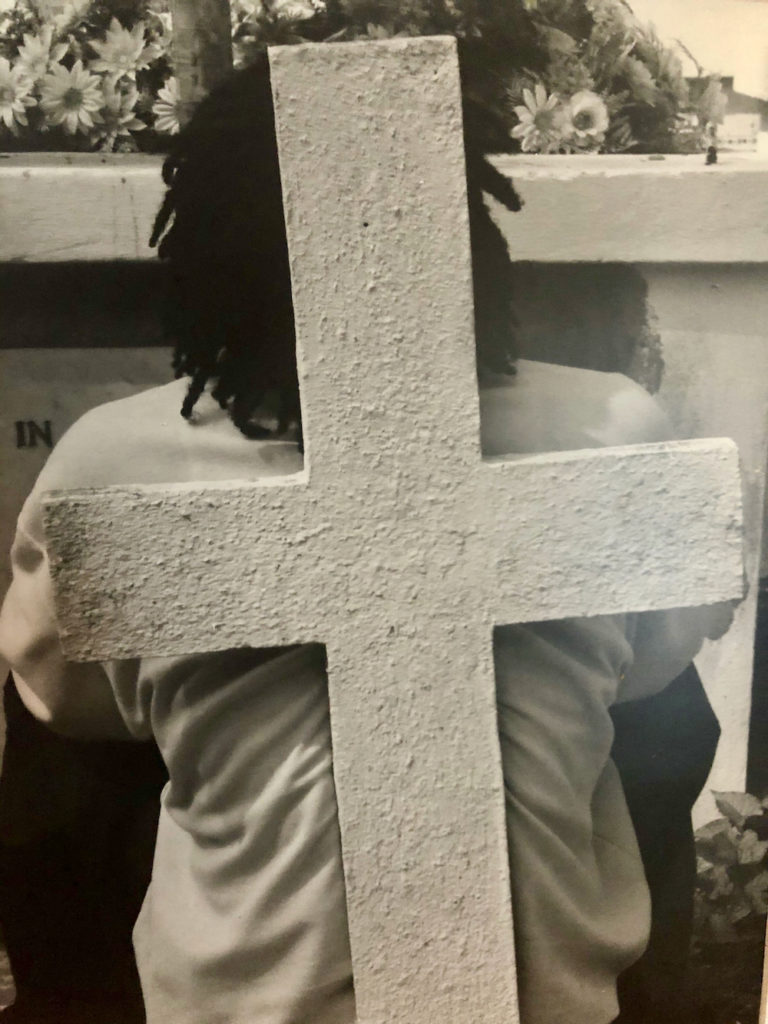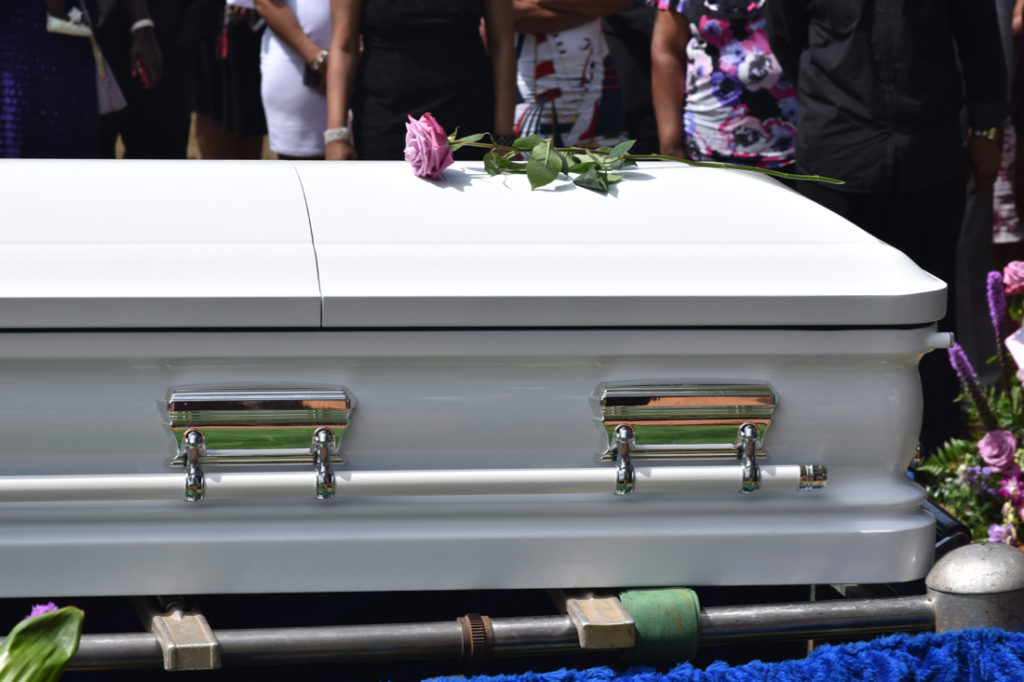
This is the second in a series of stories on a proven strategy deployed in communities across the globe to reduce violence and save substantial numbers of community members from prison, death and grievous loss of loved ones. As this strategy had a beginning in the U.S. Virgin Islands in 2016, we offer these stories as hope for our community and as a catalyst to revive what was temporarily downed by the storms of 2017.
“The problem has not been to arrive at solutions; it has been to find the political will to implement them.” –Fareed Zakaria
On Saturday morning my cellphone buzzed. I was surprised to see the name Ray Martinez on the screen. Martinez is a lifelong police official and current director of the Law Enforcement Planning Commission, and he and I talked at length on Friday – a rare and welcome treat, though bearing a disappointing withered fruit; the withered fruit is for another story.
I answered. “Hi,” I said, delighted by the unexpected call. Silence and then a choked back a sob. “I don’t know how to say this.” Pause. And then a rush of crushing words. “One of my best friend’s daughters was shot in the head last night.” Dead.
Tears, laments, frustration, rage, many more tears and later an agreement to sit with our grief awaiting guidance.
I didn’t know my friend’s friend’s daughter, but I knew a call would come again, as they have over and over and over for the last 20 years as one violent death has piled onto another. In fact, I realized as I let out my own silent scream, I had been holding my breath.
I had also been holding Part II of this series on homicides, working on interviews and a way to make it clear to the community that there is hope and solutions are available to stop these stupefying losses.
Even if I had not waited to put to paper the interviews and history that follow, it would not have changed the outcome for 21-year-old Kadiyen Illidge and her parents and loved ones.

With every death, however, for decades, I have lamented the repeated failure of our elected officials to find the will to implement what might have prevented it.
In February 2014, Amy Crawford, then-deputy director of National Network for Safe Communities, was invited and showed up to a Peace Summit designed to receive input from people who have had success in changing outcomes in their communities and to develop a strategy to change the territory’s outcomes.
With a lack of cooperation and will at the forefront of failure in the Virgin Islands, as of Sept. 29, the territory has logged 277 homicides since that summit. Kady, as she was known by Martinez, brought that number to 278.
A United Nations Homicide Global Study provides a stark statement about the reality of the statistics. “The intentional killing of a human being by another is the ultimate crime. Its indisputable physical consequences manifested in the form of a dead body also makes it the most categorical and calculable.”
Crawford, who worked with NNSC for six years from 2012 to 2018, has seen the Group Violence Intervention strategy work in many jurisdictions. And when she left the V.I. in February 2014, she was hopeful the strategy she was intimately schooled and engaged in could work in the islands, too.
“I saw a civic character of engagement and leadership,” that gave her hope, she said recently.
In the five days that Crawford spent touring, talking and listening six years ago, she also took the “Belly of the Beast tour” as activist and local group specialist LaVelle Campbell dubbed his guided drive through the neighborhoods where open drug dealing and ever-present threats of violence rendered playgrounds uninhabitable and homes shuttered against the mayhem born of inaction and indifference.
But in 2014, Crawford, a lawyer and public defender, remembers that in those meetings and gatherings, “People weren’t frustrated yet.”
“While there was some disappointment there was no anger,” she said.
Of course, she said, the people she met at the summit, “were not the people being most affected. She said all too often, “We only do something when it was someone we know. Most people are too scared to engage the harmed community.”
Furthermore, they don’t want to work with law enforcement, which is the crushing blow to the Ceasefire Initiative, as the strategy is sometimes referred to.
“People resolve their own conflicts,” Crawford said, “because they don’t feel they can turn to law enforcement.”
In the communities where GVI has failed to gain a foothold or be demonstratively effective, the issue has always been the same: lack of commitment from the police.
New Haven GVI project manager Stacy Spell, in several interviews, has said he holds the same view. You cannot make the strategy work without police buy-in. And often that buy-in has to be demanded by higher-ranking elected officials that can and must hold the police accountable.
From Rhetoric and Apathy to Action
In 2015, Rachel Locke was the senior policy advisor and international lead at the National Network for Safe Communities at John Jay College of Criminal Justice. Her tenure at NNSC coincided with the moment in time that the Virgin Islands first made functional moves toward addressing its egregious homicide problem. Then-Deputy Police Commissioner Curtis Griffin, who in seeking a solution to quelling the killings came upon the strategy developed by David Kennedy and learned the Practice Peace Initiative, had already made contact with NNSC and familiarized the territory’s stakeholders at the 2014 Practice Peace Summit and the stakeholder meeting that followed the summit four days later.
After the V.I. Senate, by unanimous vote in 2014, refused to let loose of the $250,000 then-Gov. John P. deJongh Jr. requested of them to kickstart the initiative, Griffin “found” the necessary funds in the V.I. Police Department budget and signed the contract to begin the training and mapping.
Time, money and personal efforts were committed by people who were approached to participate in the training and travel to experience firsthand encounters with communities where the strategy had met with measurable success.
Between the end of 2015 and the fall of 2017, Locke traveled several times to St. Thomas and also met with Virgin Islanders who were trained on the mainland. In a recent conversation, she said, “I felt like there was a degree of fatalism [in the Virgin Islands] you see in other places.” Locke, who is now the director of Impact:Peace at the Joan B. Kroc Institute for Peace and Justice at the University of San Diego, said, “I recall telling people on the mainland that the V.I. was about on a par with Honduras,” relative to group violence and community attitudes. She admitted it was shocking to see the level of indifference considering the Virgin Islands’ economic dependence on tourism.
“The police were making it safe for tourists versus local youth who were dying in large numbers.” She said the deaths of mostly young, Black men were “pushed under the rug.”
Locke did see momentum being built during her time working with VIPD and a small group of committed, passionate community members and nonprofits. Then came the double whammy of hurricanes Irma and Maria, bringing an abrupt halt to the work.
It was not only the storms, however. Administrations changed and that, coupled with a return to the ever-alluring status quo and rejection of anything not seen as “our idea,” left the territory in its widely accepted 40-homicides-a-year mode. There was also the matter of an unsigned contract, and NNSC working for nearly a year without further payment or commitment.
The upside is those same community members, and some newly engaged strong-willed and passionate young activists were not blown away by the storms. Their roots are in the Virgin Islands … and they knew and loved several of those who have died. They do not see them as a “throw-away” population.
The money is available to reengage NNSC to finish what was started nearly seven years ago. The catch is, lack of commitment on the part of elected officials and police to “do the work.”
Crawford, Locke and Kennedy, along with Spell and others, make it clear that if there is not someone at the top saying, “you must do this,” and systems for meaningful accountability in place, the bodies will continue to drop, unabated.
The other thing that those above mentioned and others who have done the work agree about it is ego, self-interest and the need to take credit also stand in the way of stopping the senseless violence.
In other words; without unselfish, political will, the solutions remain fatally theoretical while the dead bodies are all too real.
Coming – Part III: A strategy for the Virgin Islands is ready





